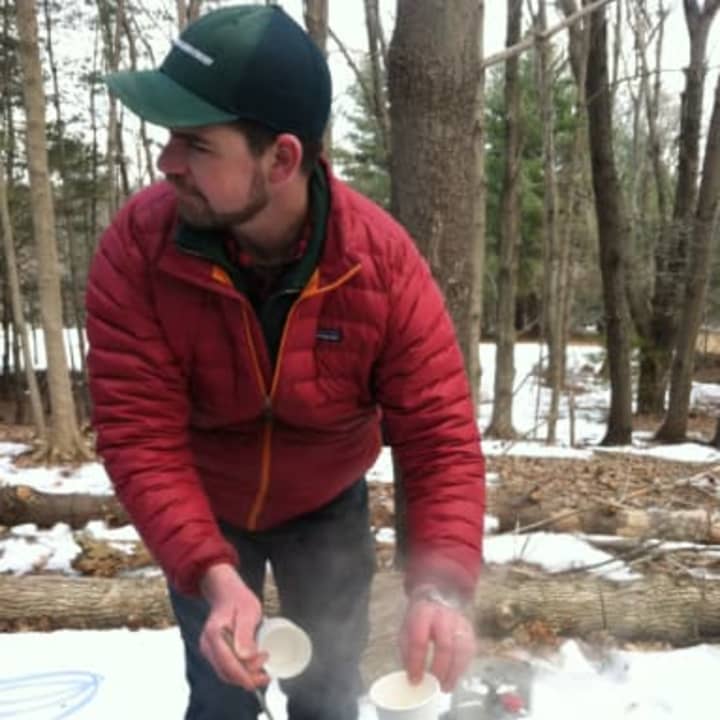"This is my energy drink," Conaway said with a laugh about the drink, which tasted like sugar water. The sap has to be boiled longer in order to turn it into maple syrup.
Conaway, conservation and outreach director at the Greenwich Land Trust, led a maple-tapping event at the trust's American Chestnut Sanctuary on Burning Tree Road in Greenwich.
About a dozen people joined Conaway and other land trust staff at the recent event. He showed how maple trees are tapped and how the sap is collected in a pail. Sap was boiled on-site to give anyone who wanted it a taste of the sweet drink.
The preferred side to tap is the south side of the tree, which faces the sun, with the spile at a slight downward angle in order for the sap to drip into the bucket, he said.
Older spiles, made of either cast iron or galvanized steel, are very thick and can be used year after year, he said. Despite modern technology, Conaway said the process used today would have been very familiar to people a century ago.
"Technology hasn't changed that much," Conaway said as he pointed to the spile and the bucket where the sap is collected.
Most of the world's maple syrup is produced in Canada with the province of Quebec dominating the industry and supplying about 75 percent of the maple syrup in the world.
Click here to follow Daily Voice Greenwich and receive free news updates.








